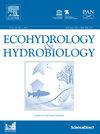减少水电运行中的风险因素:思南江水电站爆炸事故的教训
IF 2.2
4区 环境科学与生态学
Q2 ECOLOGY
引用次数: 0
摘要
随着全球能源模式向可持续发展转变,水电因其清洁和可再生的特性,成为追求能源安全和环境保护的关键因素。然而,水电设施的运行充满了自然现象和人为活动的风险。例如,极端天气事件和不理想的水库作业可能引发严重的安全事故。2020年5月29日,中国云南省泗南江水电站发生灾难性爆炸,就是一个很好的例子。这一事件造成了重大的人员和经济损失,暴露了空间站安全协议的严重缺陷。本文对该事故进行了全面的研究,详细分析了恶劣的水文气象条件、水库水质变化、土壤侵蚀和水库管理缺陷对事件发生的影响。调查显示,造成灾难的主要原因是水库内高浓度污泥的积累,在特定的气象条件下,导致甲烷气体达到爆炸水平。此外,水库水质下降、干旱条件延长、土壤侵蚀加剧共同加剧了甲烷的生成和积聚。根据这些发现,本文提出了一系列针对水电站管理的预防和安全措施。通过实施这些建议,目的是提高操作标准,防止类似的灾难发生。该研究为全球水电行业敲响了重要警钟,强调了警惕的安全治理势在必行,以避免类似的灾难。本文章由计算机程序翻译,如有差异,请以英文原文为准。
Mitigating risk factors in hydropower operations: Lessons from the Sinanjiang hydropower station explosion
As the global energy paradigm shifts towards sustainability, hydropower emerges as a pivotal element in the pursuit of energy security and environmental preservation, owing to its clean and renewable attributes. Nevertheless, the operation of hydropower facilities is fraught with risks stemming from both natural phenomena and anthropogenic activities. Extreme weather events and suboptimal reservoir operations, for instance, can precipitate grave safety incidents. A case in point is the catastrophic explosion at the Sinanjiang (SNJ) hydropower station in Yunnan Province, China, on May 29, 2020. The incident inflicted significant human and financial tolls, revealing critical deficiencies in the station's safety protocols. This paper presents a comprehensive examination of the mishap, scrutinizing the influence of severe hydrometeorological conditions, reservoir water quality alterations, soil erosion, and reservoir management shortcomings on the event's occurrence. The investigation reveals that the primary cause of the disaster was the accumulation of high sludge concentrations within the reservoir, which, under specific meteorological conditions, led to methane gas reaching explosive levels. Additionally, the reservoir's declining water quality, prolonged drought conditions, and exacerbated soil erosion collectively exacerbated methane gas generation and accumulation. In light of these findings, the paper proposes an array of preventative and safety-enhancing measures tailored to hydropower station management. By implementing these recommendations, the aim is to elevate operational standards and forestall similar catastrophes. This research serves as a crucial alert for the global hydropower industry, emphasizing the imperative of vigilant safety governance to avert analogous calamities.
求助全文
通过发布文献求助,成功后即可免费获取论文全文。
去求助
来源期刊

Ecohydrology & Hydrobiology
Agricultural and Biological Sciences-Aquatic Science
CiteScore
5.40
自引率
3.80%
发文量
51
期刊介绍:
Ecohydrology & Hydrobiology is an international journal that aims to advance ecohydrology as the study of the interplay between ecological and hydrological processes from molecular to river basin scales, and to promote its implementation as an integrative management tool to harmonize societal needs with biosphere potential.
 求助内容:
求助内容: 应助结果提醒方式:
应助结果提醒方式:


